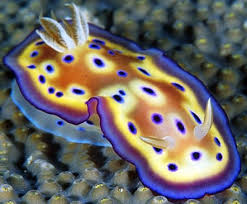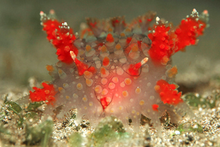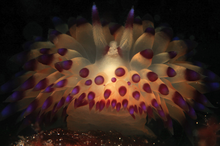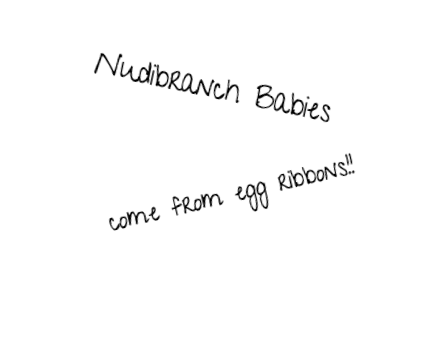Inspired: Nature Does It Again
- By Jacqueline Hosford, ASID
- Jun 25, 2017
- 5 min read
Color, Shape & Pattern in Nature
My friends and associates are probably at the point of grin-and-bear-it when I mention “Nudibranch." “There she goes again,” they politely think to themselves.
They know that I'm wildly fascinated with Nudibranchs since I discovered them last year.
Still, I have yet to encounter anyone who tells me, when I first mention Nudibranchs, "Yeah! I know what you mean! Nudibranchs are awesome!”
Mostly it’s, "Nudi-what??"

Nudibranchs are a riot of color, shape and pattern provided to us by nature, herself. They are a special sub-group of sea slug (Phyllum Mollusca/Class Gastropoda.)
Despite a potential “yick” factor associated with the idea of a “sea slug,” these are in fact some of the most exquisite creatures on Earth. Just call them by their Latin names and join me in admiration of these tiny creatures.
Google Nudibranch images. As I look upon one lovely image after another of any one of the 3,000–plus varieties of Nudibranch, I am overwhelmed by the quintessential beauty–the sort of human emotional response to nature that inspires many of us with an artistic or poetic bent.
So, what does any of this have to do with interior design?!?!?!
I am often inspired to somehow express these sorts of experiential moments through interior design and decoration–my predominant medium for artistic expression.

Perhaps the colors of the Nembrotha kubaryana (left) become the inspired foundation for a pleasing yet unexpected color scheme.
Or, the shapes–often undulating and organic–lead to an interestingly fresh decorative approach to a modern take on frills or soft, rounded forms. (below right)

Imagine attempting to explain to someone that the use of two delicately sheer layers of fabric for their window drapery was inspired by the soft luminescence and ruffled edges of the dirona–albolineata. (below left)
Or, that the pattern was literally drawn from the Blue Dragon Pteraeolidia ianthina.
(below right)

My imagination fires up every time I encounter the exquisite colorations and the seemingly endless variety of shapes and patterns. And, I enthusiastically encourage people I meet to find that part of themselves that is open to new expressions and experiences.
I even introduced the Nudibranch to my recent group of design students! Most people who are not practiced in thinking outside of the box in a particular specialty, are often hard-pressed to get beyond the subliminal but deeply affecting influence of what we see around us day in an day out. Grays, blacks and white, with the optional beiges have been the ubiquitous in-trend basic colors in the retail furnishings and décor markets for years now. We've gotten so used to the look. And, admittedly it's eminently practical to offer those basic stock colors. You can't go "wrong" with a neutral sofa or wall color. But, if you're interested in studying interior design and decoration, then the doors must open. So I handed out the design project homework to space plan and decorate two rooms of a home. As part of the design program/client profile each student was asked to incorporate their imaginary client’s request to employ a color scheme inspired by the client's beloved full-color art photo of a Nudibranch. Each student was to pick one Nudibranch image they liked and run with it.

I was sure this exercise would catapult them all into the fabulous world of color, willing or not, and add an additional level of design difficulty and fun to the their projects.
You should know that my clever plan was foiled when nine of eleven students managed to find and choose the one black and white Nudibranch. Out of all the colorful ones!
And while all my gushing about Nudibranchs and color inspiration might seem just fun and entirely idiosyncratic, they are not. In fact, this blog touches upon a whole universe of contemporary design specialty, research and related industries built upon the precepts of biomimicy and biophilia. Both of these areas of study and application are direct out-growths of our in-born human connection to and curiosity about nature.
Alison Bernet, project manager at Terrapin Bright Green, with expert knowledge in both architecture and biology, clarifies the fine difference between the two concepts:
"biomimicry is the “mimicry,” or more accurately, the emulation of life’s engineering. In contrast, biophilia describes humans’ connection with nature and biophilic design is replicating experiences of nature in design to reinforce that connection. Biomimicry is an innovation method to achieve better performance; biophilic design is an evidence-based design method to improve health and wellbeing."
My emotional experience of the Nudibranch falls in line with the idea of biophilia.
"Biophilia, which translates to “love of life,” signifies humans’ innate biological and emotional need to connect with nature. Biophilic design endeavors to forge this connection by leveraging or inserting instances of nature, natural patterns, or spatial conditions into the built environment."
I was delighted years ago to discover this area of study and impact on design. While I had only intuited the concept, companies like Interface, had been applying the precepts of biophilia to their research and development for their lines of ubiquitous commercial carpeting. You might know their residential offerings under the brand of FLOR: those super–fun–to–design–with carpet tiles. Below right is a clear example of one carpet product infused with a biophilic sensibility of earth and flora.
Imagine how just adding this carpet alone into a bland generic office space would transform your experience of being in this space. Research provides that indeed we do respond positively: fewer sick days, good employee retention, better performance, better bottom line. And this is just considering the floor covering. Add in other attuned-to-nature design elements, such as natural lighting/shade control, furniture reflecting organic forms, etc., and you have a terrific space for happy and healthy human existence.
Our experiential and emotional response to earth, water, sky and various forms of flora and fauna, incorporated into the built-environment through biomorphic design elements does in fact support and enhance human healing and happiness. So, why not add in a Nudibranch or two, or three, to that healthful biomorphic mix?
In any event, enjoy the colors, the shapes, the "everything" of these lovely sea slugs! Here are few of my favorites:
Interested in learning more about these fascinating areas of design research and application? Check out these links.
Jacqueline Hosford, ASID, principal of Jacqueline Hosford Interior Design, loves working with clients to design their spaces for optimum function and each client's ultimate delight. Jacqueline is a professional member of the American Society of Interior Designers (ASID); is certified by the National Council for Interior Design Qualification; and is an adjunct professor of interior design, State University of New York (Purchase). Jacqueline is a graduate of Barnard College-Columbia University, and the New York School of Interior Design with highest honors. She can be reached at Jacqueline@jacquelinehosforddesign.com.



























































Comments